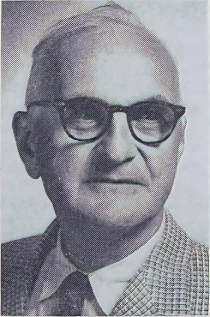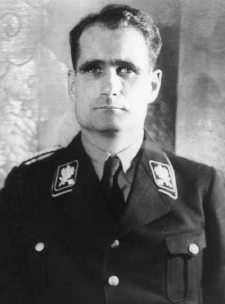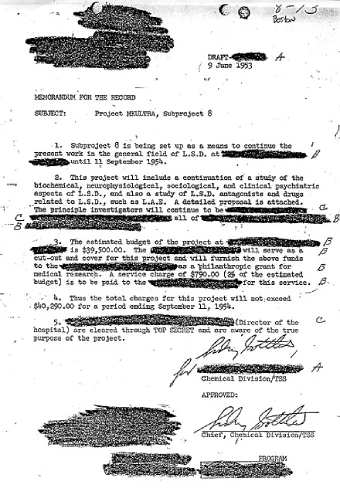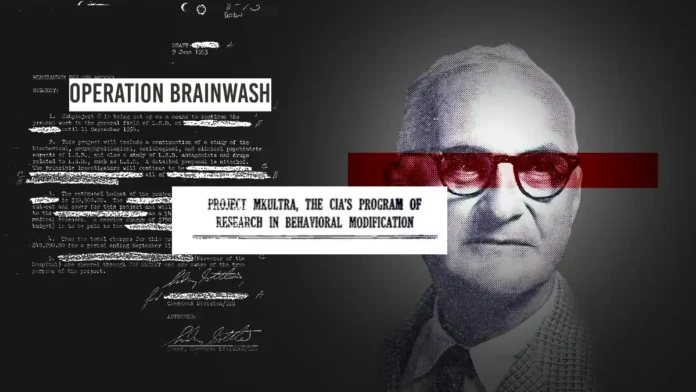This is the story of a psychiatrist Donald Ewen Cameron who was funded by the CIA and was conducting unethical medical experiments in brainwashing and mind control to manipulate patients’ minds and alter their memories permanently. His methods, including “psychic driving” and the use of drugs like sodium amytal, aimed to manipulate memories and behaviors permanently. Despite his ambitions to revolutionize psychiatry and win the Nobel Prize, his unethical experiments ultimately failed to achieve their goals. His techniques, branded as brainwashing, led to significant harm to his patients and raised serious ethical concerns.
This article has two sections, the first is “Donald Ewen Cameron and his pursuit of knowledge” in which we have explained in detail Cameron’s early life, his thoughts, and his evolution in the field of psychiatry and the second is “Operation Brainwash” which details his role in MKUltra Subproject 68 and his unethical medical experiments. This article is much longer than normal articles, but we have tried to make it as simple as possible.
Contents
- 1 Donald Ewen Cameron and his pursuit of knowledge
- 2 Operation Brainwash
- 3 Conclusion
- 4 Sources
Donald Ewen Cameron and his pursuit of knowledge
Donald Ewen Cameron was a famous psychiatrist, but his legacy is complicated because he was involved in unethical medical experiments and made psychological torture methods for the Central Intelligence Agency(CIA). While he did great things in psychiatry, these controversial actions have made people question his work. Cameron’s work has caused a lot of arguments about what’s right in medicine and how far scientists should go. Even though he did good things for psychiatry, people still remember him for these tough ethical questions.

Cameron’s Early Beginnings
Born on 24 December 1901 at, the Bridge of Allan, Stirlingshire, Scotland, Cameron’s academic journey started with a foundation in psychological medicine, earning an M.B., Ch.B. from the University of Glasgow in 1924, followed by a D.P.M. from the University of London in 1925. His pursuit of knowledge led him to achieve an M.D. with distinction from the University of Glasgow in 1936, marking significant milestones in his educational path.
Cameron’s early professional development unfolded at the Glasgow Royal Mental Hospital, where he began his psychiatry training in 1925. By 1926, he took the role of assistant medical officer at the same institution. During this time, he met with psychiatrist Sir David Henderson, a protégé of Swiss-born US psychiatrist Adolf Meyer, this match proved to be a turning point in Cameron’s career progression.
Cameron’s visit to the USA
To improve his expertise, he visited the United States, where he engaged in advanced training under the tutorship of Meyer at the prestigious Phipps Clinic, Johns Hopkins Hospital in Baltimore, Maryland. His tenure from 1926 to 1928 was supported by a Henderson Research Scholarship, providing invaluable opportunities for professional growth and specialization in psychiatry.
Cameron’s Visit to Switzerland
Cameron moved from Baltimore to the Bergholzli Psychiatric Hospital of the University of Zurich in Switzerland in 1928. There he studied under Hans W. Maier, the successor of the Swiss psychiatrist Eugen Bleuler, who greatly influenced psychiatric thought. There he met Manitoba’s chief psychiatrist, A.T. Mathers, who convinced Cameron to move to Brandon, the province’s second-largest city, in 1929.
After serving there for seven years, Cameron was appointed physician-in-charge of the Provincial Mental Hospital’s Reception Unit, along with organizing the mental health services in the western half of the province, he also established ten operational clinics; this model served as a precursor to community health models in the 1960s and as a model for similar initiatives in Montreal.
Cameron’s Marriage and Relocation to the USA
In 1933, he married Jean C. Rankine. They both attended the University of Glasgow. She was good at tennis, taught math at the University of Glasgow, and used to captain the Scottish field hockey team. They had three boys and one girl in their family. Just a year after they got married, in 1936, he moved to Massachusetts and became the research director at Worcester State Hospital.
Cameron’s First Book
“His first book, called “Objective and Experimental Psychiatry,” came out in the same year. In it, he talked about his belief that psychiatry should study human behavior using a systematic, scientific approach based on biology. His ideas of behavior emphasized the interdependence of the organism and its surroundings; the book also described research design and experimental methodology. Cameron was a staunch supporter of the rigorous scientific method and clinical psychiatry.”
Relocation to New York
He relocated to Albany, New York, in 1938, where he obtained his psychiatric diplomate and subsequently became certified. He taught neurology and psychiatry at Albany Medical College and the Russell Sage School of Nursing in the Albany region from 1939 until 1943.
A reputation for being a psychiatrist who could bridge the gap between the organic, structural neurologists and the psychiatrists whose knowledge of anatomy was limited to maps of the mind rather than brain maps emerged during those years as Cameron started to elaborate on his ideas about the relationships between mind and body. He rose to prominence in his fields of expertise by training nurses and psychiatrists.
“Cameron adopted British and European schools and methods of practice, focusing mostly on biological descriptive psychiatry, in which mental disorders were treated as physical illnesses; As a result, all psychological disorders were seen as hard-wired, physiological products and the direct result of the patient’s biological structure, rather than the influence of social conditions.”
“Thus, characteristics were identified as brain-derived disorders. At this point, he developed an interest in learning how to influence the brain to regulate and comprehend memory processes properly. Additionally, he was interested in understanding how aging affected memory because he thought that psychosis was a feature of the aging brain.”
Cameron’s Visit to Canada
Dr. Wilder Penfield, a neurosurgeon, invited Cameron to join McGill University in Montreal, Canada, in 1943. The Allan Memorial Institute for Psychiatry was founded with support from the Rockefeller Foundation, a gift of Sir Hugh Allan’s Mount Royal residence, and contributions from John Wilson McConnell of the Montreal Star. Cameron became the first chairman of the McGill Department of Psychiatry and the founding director of the Allan Memorial Institute.

To set up the McGill psychiatry department, he reached out to psychoanalysts, social psychiatrists, and biologists from all over the world. Unlike many Canadian hospitals in the early 1940s, which had a strict “closed door” policy, the Allan Memorial Institute operated with an “open door” policy from the start in 1943. This meant that patients were free to leave if they wanted to. In 1946, Cameron established the first-day hospital. This allowed patients to receive treatment at the institute during the day and go home at night. This approach helped prevent unnecessary hospital stays and allowed patients to stay connected with their families and communities.
Richard Hess and Germany
Richard Hess

During the Nuremberg trials in 1945, the Allies held trials against leaders of Nazi Germany for their actions in World War II. Cameron, along with Nolan D. C. Lewis and Paul L. Schroeder, was asked to assess Rudolf Walter Richard Hess’s mental state. They diagnosed him with forgetfulness and hysteria, although Hess later admitted to pretending to have amnesia.
“Rudolf Walter Richard Hess, also known as Heß in German, was an important German politician during the time of Nazi Germany. He became Deputy Führer alongside Adolf Hitler in 1933 and stayed in that position until 1941. In a surprising move, he flew alone to Scotland to try to make peace with the United Kingdom during World War II. However, he was caught and found guilty of crimes against peace. Even though he was given a life sentence, Hess ended his own life in 1987 while still in prison.”
Cameron’s view of the German People
In 1945, Cameron wrote “The Social Reorganization of Germany,” where he argued for changing German society to prevent future wars. He believed that certain cultural traits in Germans led to aggression and suggested changing the legal system to address this. He thought it was important to make Germans face the terrible things that happened during World War II to make them change.
In his book “Life is For Living” from 1948, Cameron was worried about the German people in general. He was afraid of their deep-rooted attitudes and beliefs, similar to Sigrid Schultz’s warnings in “Germany will attempt it again.” Cameron thought that the Germans, influenced by the events leading to World War II, were a big danger. His worries went beyond just who should be parents or hold important jobs. He often portrayed Germans as the prime example of psychological problems. According to his studies, he thought they shouldn’t be parents or leaders because they were genetically inclined towards aggressive behavior, which he believed would lead to more conflict, not peace.
In his later work, “Nuremberg and Its Significance,” Cameron put forward a plan to rebuild Germany’s legal system and prevent future conflicts. He cautioned about the risks of nuclear weapons falling into the wrong hands if society wasn’t reorganized properly. Cameron urged for the incorporation of psychiatric principles into international politics and governance, particularly through institutions like the United Nations.
Additionally, Cameron started dividing populations into “the strong” and “the weak,” promoting the separation of the latter group. He viewed the mentally ill as part of the “weak” category and advocated for keeping them out of society to maintain order. His goal was to avoid disorder by removing what he considered societal vulnerabilities.
Cameron’s Evolution in Psychiatry
From the late 1940s to the early 1950s, Cameron continued working on memory and aging research, examination of Social Constructs, and Mental Health Strategies and explored how societal norms and interpersonal dynamics influence mental well-being. He mentioned the relationship between RNA and memory in articles released during this period and also elaborated on the diagnostic classifications for psychiatric conditions like schizophrenia, depression, and anxiety. His broader understanding of mental health within a societal context expanded the connections between human biology and psychiatry but also raised controversial theories, especially regarding his theory of mental illness as a social contagion, which highlighted the influence of community dynamics on psychological distress.
He emphasized the impact of interpersonal relationships, families, communities, and culture on emotional disorders and evaluated the success of psychiatric treatment units within hospitals, noting similarities between mental patients and those with non-psychiatric conditions, suggesting potential somatic causes for psychological ailments. He embraced a mental disease theory rooted in social constructivism, emphasizing the influence of culture and society on individuals’ ability to function. He advocated for societal measures to eliminate undesirable and violent tendencies, with psychiatry playing a disciplinary role.
He also investigated ideal personality traits for industrial settings and how industrial conditions could affect workers. He argued that a stronger personality could withstand demanding industrial environments, while a weaker one would struggle. Drawing from World War II Germany, he highlighted societal influences on mental well-being, cautioning against widespread worry or neurosis.
While acknowledging the connections between personal psychology and nervous nature, Cameron rejected the concept of the unconscious. He believed childhood experiences and family dynamics shaped social behavior, advocated for a psychological approach free from guilt complexes, and emphasized protecting children from outdated methods and instilling inhibitions and taboos.
He theorized that mental illness was hereditary, and advocated for redefining marriage compatibility and isolating mentally ill individuals to prevent the recurrence of mental illness. Cameron controversially suggested that mental illness could be contagious, with contact leading to the spread of symptoms. He proposed rigorous management and research to combat mental illnesses, involving law enforcement, hospitals, governments, and educational institutions, alongside strategies within families to address mental health issues.
Cameron believed that just like how society takes steps to prevent the spread of diseases, it should also recognize chronic anxiety as something contagious. He thought that people with mental illnesses could pass on their conditions to others. He warned that government institutions should take action to prevent this. Cameron’s ideas also touched on race, especially in his theories about the German people.
In the late 1940s, Cameron talked about his ideas in a lecture called “Dangerous Men and Women.” He identified several personality types that he believed posed a threat to society. One type is a passive person who is too scared to speak up for themselves and always gives in to others. Another type is a possessive person who is very jealous and demands complete loyalty, especially from their loved ones. Then, there’s the insecure person who follows the rules strictly and fears anything new or different. Finally, there’s the psychopath, who Cameron likened to the Gestapo, especially dangerous in times of turmoil.
Cameron thought that if psychiatry played a bigger role in governing institutions like schools and prisons, society could overcome the influence of these “sick” personalities. He believed that political systems should be closely monitored, especially among the German people, whom he believed were prone to dictatorial leaders because of their personality traits.
Cameron stressed the danger these personalities posed to society and especially to children, whose behavior could be influenced by them. He believed that these traits were contagious, spreading through society and infecting others. To maintain peace and progress, Cameron thought that these personality types needed to be removed from society. He saw them as threats to stability and life itself, and he believed that experts needed to find ways to change people’s attitudes forcefully to prevent dictatorial leaders from arising.
Operation Brainwash
During the 1950s and 1960s, Cameron originated the “psychic driving” concept, and the CIA came to know about this.
“In this controversial practice known as “psychic driving,“ patients were subjected to a relentless barrage of a single message played repeatedly on a looped tape in an attempt to alter their behavior. This method exposed patients to hundreds of thousands of repetitions of the same statement throughout their treatment. Additionally, patients were simultaneously given muscular paralytic drugs like Curare to immobilize them, facilitating their exposure to the ongoing looped messages.”
On the other hand, the CIA was expanding their MKUltra program experiments to Canada, Cameron’s medical experiments became the focus of the Central Intelligence Agency’s MKUltra program, and they recruited Cameron and started funding him under MKUltra subproject 68. This program was aimed to explore mind control, with Cameron hoping to treat schizophrenia by erasing existing memories and reprogramming the psyche. During these times, Cameron traveled regularly from Lake Placid, New York, to Montreal, where he conducted experiments at McGill’s Allan Memorial Institute.

Over the years from 1957 to 1964, Cameron received $69,000 for his research, and the program was known as the Montreal experiments, which involved the use of LSD, paralytic drugs like curare, and electroconvulsive therapy at intensified levels. Cameron’s psychic driving experiments involved inducing drug-induced comas lasting weeks, during which subjects listened to tape loops of noise or repetitive statements. These experiments, conducted on patients with minor issues such as anxiety or postnatal depression, often resulted in permanent debilitation, causing incontinence, amnesia, and confusion about their identities and relationships.
The British psychiatrist William Sargant, working at St Thomas’ Hospital in London and Belmont Hospital in Sutton, carried out work similar to Cameron’s, inspired by and paralleling his methods. Cameron was involved with the Secret Intelligence Service and conducted experiments on his patients without their consent, resulting in comparable long-term harm.
Reports revealed Cameron’s use of curare to immobilize patients during research, with little to no positive outcomes observed even after prolonged sensory isolation and depatterning. Patients subjected to radio frequency and electromagnetic signals in the Radio Telemetry Laboratory, under Cameron’s supervision, showed no signs of improvement.
Naomi Klein, in her book The Shock Doctrine, argues that Cameron’s research and involvement in the MKUltra project were not primarily focused on mind control and brainwashing, but rather on devising a method for extracting information from resistant sources, essentially constituting torture.
Alfred W. McCoy adds that Cameron’s experiments, building upon Donald O. Hebb’s earlier research, laid the foundation for the CIA’s two-stage psychological torture technique. This method begins by disorienting the subject and then creating a scenario where the subject can relieve their discomfort by giving in to demands.
Internal CIA documents from the Society for the Investigation of Human Ecology indicate that Cameron was unaware of the CIA’s role in funding his research. Despite the controversy surrounding his experiments, Cameron achieved global recognition as the inaugural chairman of the World Psychiatric Association and as president of both the American and Canadian Psychiatric Associations. Additionally, he served on the Nuremberg medical tribunal from 1946 to 1947.
During the 1980s, several of Cameron’s former patients took legal action against the CIA, seeking damages for the harm they endured. This narrative was extensively covered by the Canadian news program The Fifth Estate. The experiences of these individuals and their legal struggles were later dramatized in the 1998 television miniseries titled The Sleep Room.
In 1980, former patients interviewed by The Fifth Estate were part of the group suing the CIA for the enduring repercussions of Cameron’s treatments. Anne Collins delved into Cameron’s background and the operations of the Allan Memorial Institute in her book “In the Sleep Room,” which was subsequently adapted into a television series called “The Sleep Room.” Naomi Klein posits in “The Shock Doctrine” that Cameron’s research, despite being labeled as mind control, was focused on extracting information through methods that disguised torture.
Conclusion
Donald Ewen Cameron is one of controversy and ethical scrutiny because his involvement in the CIA’s MKUltra program, along with his psychiatric experiments at McGill University’s Allan Memorial Institute, resulted in lasting harm to many individuals. Cameron’s methods, including the use of drugs, electroconvulsive therapy, and psychological manipulation, have been condemned for their lack of informed consent and their disregard for the well-being of his patients.
The CIA did utilize some of these experiments, including psychic driving, in their interrogation techniques. The goal was to explore methods of psychological manipulation and coercion to extract information from individuals deemed resistant. Techniques such as psychic driving, along with other forms of psychological torture, were employed in CIA interrogations as part of their broader efforts to gather intelligence.
Despite his significant contributions to the field of psychiatry and his leadership roles in various professional associations, Cameron’s reputation remains tarnished by the lasting consequences of his unethical experiments. Lawsuits filed by his former patients in the 1980s, as well as critical scrutiny from authors such as Naomi Klein and Alfred W. McCoy, highlight the lasting impact of his actions.
Cameron passed away from a heart attack while hiking with his son in the Adirondack Mountains on September 8, 1967. It is still unclear what was Cameron’s actual thoughts on his experiments, whether he considered his experiments ethical or unethical is still a question. Cameron’s work may have laid the groundwork for certain psychological techniques but his works did not win him the Nobel Prize. It is essential to recognize the ethical boundaries that must be respected in the pursuit of scientific knowledge. His story serves as a caution about the potential dangers of unchecked scientific inquiry and the importance of upholding ethical standards in medical research and practice.
Also Read:
- Psychotronic Torture: Mind Control Using Electromagnetic Radiation
- Candy Jones: A Secret Agent of the CIA Mind-Control Program
- The Evolution of Honey Trap From Ancient Times to the Digital Era
- Human-Ape Hybrid: Ivanov’s Controversial Pursuit of Scientific Boundaries
Sources
- United States Congress Senate Select Committee on Intelligence (1977). Project MKUProject MKULTRA, the CIA’s Program of Research in Behavioral Modification.
- National Public Radio (NPR), 9 Sept. 2019, “The CIA’s Secret Quest For Mind Control: Torture, LSD And A ‘Poisoner In Chief'”.
- McCoy, Alfred (2007). A Question of Torture: CIA Interrogation, from the Cold War to the War on Terror. Macmillan. p. 29. ISBN 978-1-4299-0068-3.
- Marks, John (1979). The Search for the Manchurian Candidate. New York: Times Books. pp. 140–150. ISBN 0-8129-0773-6.
- Turbide, Diane (April 21, 1997). “Dr. Cameron’s casualties”. ect.org.
- “Obituary Notices”. British Medical Journal. 3 (5568): 803–804. 1967-09-23. doi:10.1136/bmj.3.5568.803. ISSN 0959-8138. PMC 1843238.
- “Past Presidents & Board Chairs”. Canadian Psychiatric Association.
- “Presidents of the APPA”. American PsychoPathological Association.
- “World Psychiatric Association Chronology”. World Psychiatric Association.
- Lemov, Rebecca (2011). “Brainwashing’s Avatar: The Curious Career of Dr. Ewen Cameron” (PDF). Grey Room. 45 (45). MIT Press
- Cleghorn RA, Silverman B (1967-10-14). “D. Ewen Cameron, M.D., F.R.C.P.{C}”. Canadian Medical Association Journal.
- “Notes and News: Scottish Division”. Journal of Mental Science.
- Weinstein, Harvey (1990). Father, Son, and CIA. Formac Publishing Company. pp. 97–101. ISBN 9780887801594.
- “Scottish Championships”. The Argus. Melbourne, Vic. 26 August 1929.
- Cleghorn, Robert (1995). “Cameron at McGill”. In Sourkes, Theodore L.; Gilbert, Pinard (eds.). Building on a Proud Past: 50 Years of Psychiatry at McGill. Department of Psychiatry, McGill University. pp. 77–78. ISBN 9782980096341.
- Anonymous (1946). “Current Comment: Psychiatric Examination of Rudolf Hess”. Journal of the American Medical Association.
- Manvell, Roger; Fraenkel, Heinrich (1971). Hess: A Biography. London: Granada. p. 159. ISBN 0-261-63246-9.
- Sellars, Kirsten (2013). ‘Crimes Against Peace’ and International Law. Cambridge University Press. ISBN 978-1-107-02884-5.
- Paul Weindling. John W. Thompson: Psychiatrist in the Shadow of the Holocaust. University Rochester Press, 2010. p. 85.
- Weinstein, Harvey. Father, son, and CIA. Vol. 57. James Lorimer & Company, 1990.
- Cameron, Donald Ewen. (1947). Remembering. Nervous and mental disease monograph series.
- Cameron, Donald Ewen (1950). Life is for Living. OCLC 9321971.
- Marks, John D. (1979). The Search for the “Manchurian Candidate”: The CIA and Mind Control. New York: Times Books. ISBN 0812907736, 978-0812907735.
- CIA. “MKUltra Subproject 68” (PDF). National Security Archive, George Washington University.
- Shudel, Matt (August 31, 2008). “Doctor Looked After the Sick, And Looked Around for the CIA”. The Washington Post.
- “Inside Montreal’s House Of Horrors.” Montreal Gazette (Jan. 21, 1984).
- Turbide, Diane (1997-04-21). “Dr. Cameron’s Casualties”.
- Collins, Anne (1998) [1988]. In the Sleep Room: The Story of CIA Brainwashing Experiments in Canada. Toronto: Key Porter Books. pp. 39, 42–3, 133. ISBN 1550139320.
- “MK Ultra.” The Fifth Estate (Mar. 11, 1980).
- Taylor, Sid (1992). “A History of Secret CIA Mind Control Research”. Nexus.
- “The Sleep Room (1998)”. IMDb.
- Weinstein, Harvey M. (1990). Psychiatry and the CIA: Victims of Mind Control. Washington, D.C.: American Psychiatric Press.
- Klein, Naomi (2007). The Shock Doctrine. New York: Metropolitan Books.
- Bennett, Stephen (2020). When men become Monsters. Seven Days, Sunday National, 29 March 2020.
- Stunning tale of brainwashing, the CIA and an unsuspecting Scots researcher, The Scotsman, January 5, 2006.
- “Allan Memorial Institute”. Archived from the original.
- Cameron DE, Lohrenz JG, Handcock KA (April 1962). “The depatterning treatment of schizophrenia”. Compr Psychiatry. 3 (2): 65–76. doi:10.1016/S0010-440X(62)80015-7. PMID 13875932.
FACT CHECK: We strive for accuracy and fairness. But if you see something that doesn’t look right, please Contact us.
DISCLOSURE: This Article may contain affiliate links and Sponsored ads, to know more please read our Privacy Policy.
Stay Updated: Follow our WhatsApp Channel and Telegram Channel.












